
The Dismemberment of Jeanne D’Arc was created specifically for this years Brighton Festival. It is the most recent new work of Anish Kapoor and prior to its opening last Saturday had not been seen before. That it is such a fresh piece of work also means that it has not had time for the multiple layers of interpretation or ‘fiction’ (to use AK’s phrase) to stick to it. It presents us with an unusual opportunity; to approach an Anish Kapoor work without too much intellectual clutter getting in the way.
The moment I wrote that, I realised that I was beginning the process, if you hate spoilers, best stop reading now.
This work is genuinely site-specific. Not only in that it was made for, and relates to the old municipal fruit and veg market, but also that the place appears to have informed the work. Anish Kapoor, like a lot of artists is often ready to claim site-specificity simply on the basis that something happens to be made to fit a place, like distinguishing a fitted kitchen from self contained units. While all art is necessarily site-specific in a gallery, anywhere else it must either engage with the sites contexts or deliberately ignore the location, not everywhere needs a kitchen. The Dismemeberment of Jeanne D'Arc and its site resonate spatially and contextually, they exchange atmospheres and enhance how each other are read.
As always with Anish Kapoor’s work there are two ways of going about a description, one is to deal with the fact of the work, the other is to engage with the imagined meanings and references that will, no doubt, end up representing it when it is gone.
The site is a fairly extensive covered market that has been derelict long enough to develop a vaguely haunted atmosphere, it puts you in mind of the bustle that once occurred here, and although the site has been considerably neatened for this show, there is evidence of its previous occupants, dossers and minor demolition. The Sculpture extends into the space, achieving the sort of monumentality that might accompany the laying of a pipeline. Two long masses, known affectionately by some as twiglets, as high as a hedgerow these block sightlines for half the space. A central excavation and two mounds, comprised of the exact amount of stuff from the hole amassed around columns, complete the intervention. Everything Kapoor in the hall is red, which helps the uninitiated identify the work. The excavated hole, the polystyrene twiglets and the rubble mounds, are all granular, course textured and as evenly sprayed with redness as rather hurried graffiti.
It can take a while to identify the arrangement as representing bits of a woman’s body (that is assuming they do), if you haven’t seen the visuals. A group of year 10 students seemed to cotton on to the fact that they were looking into a huge vagina, with varying degrees of belief in about 10 to 20 minutes. But this is getting into the realms of ‘interpretation’ and that is for the next post.


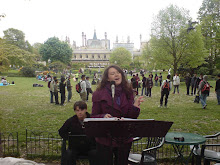
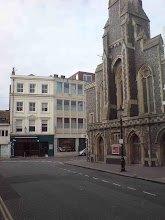

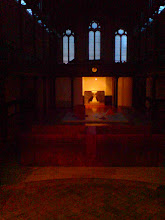


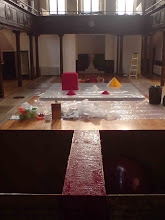







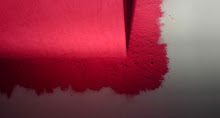
No comments:
Post a Comment